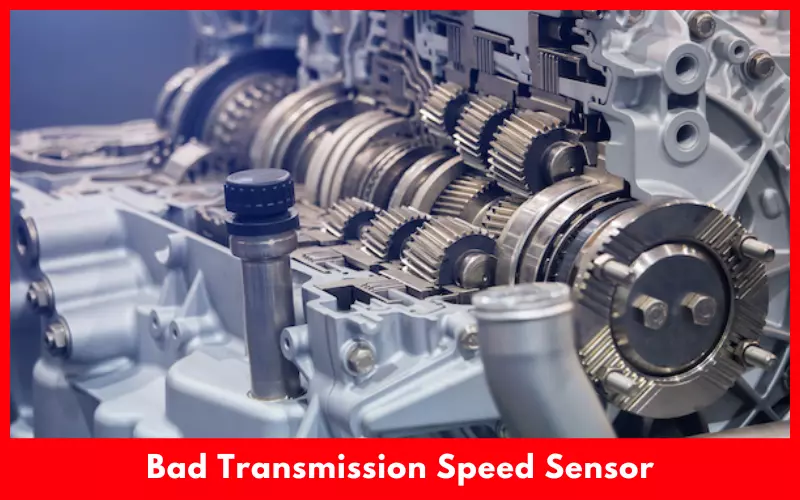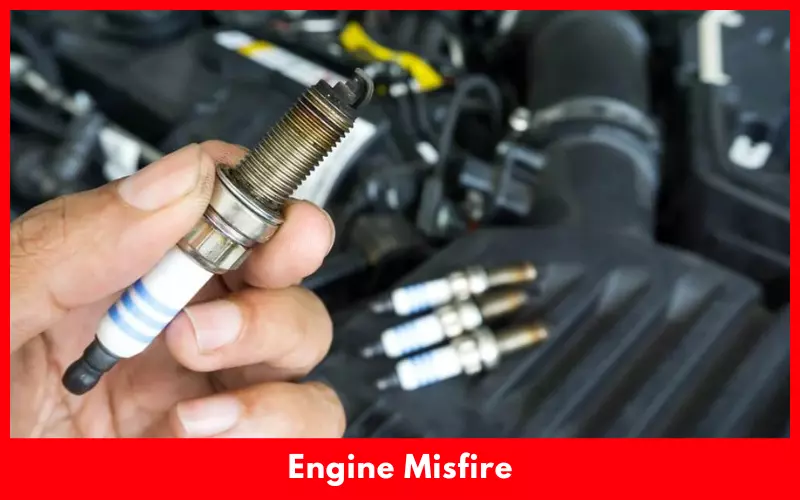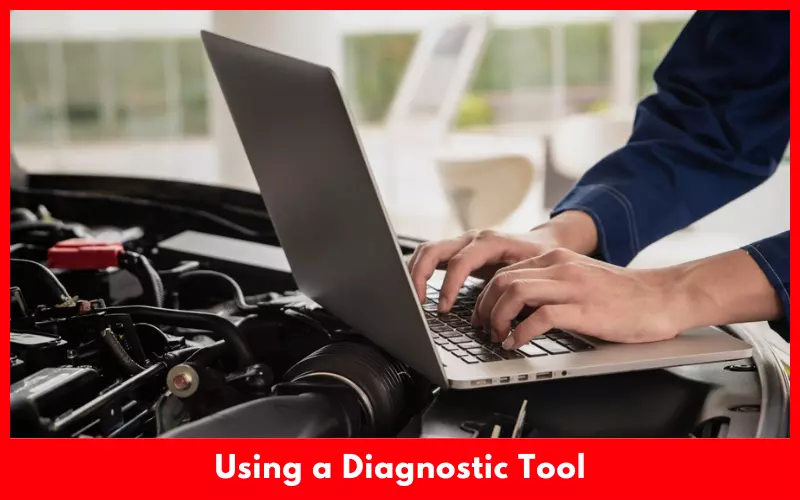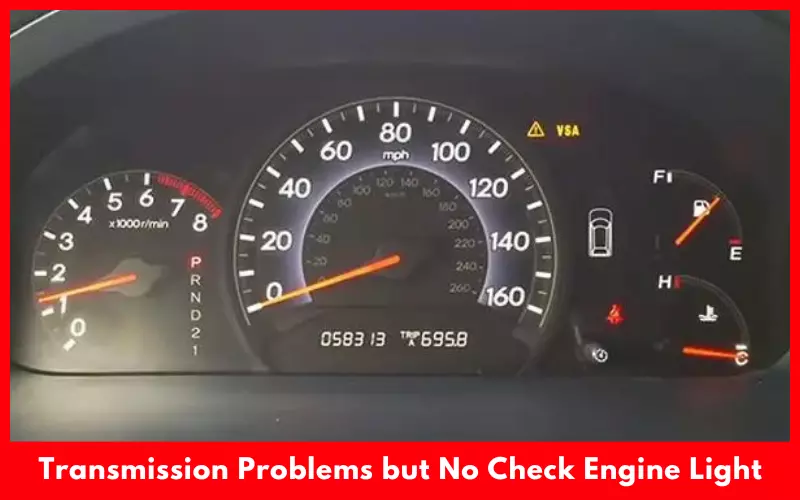Check engine light is an initial sign of transmission problems which makes it easier to diagnose and fix. However, some transmission problems don’t trigger warning light or error codes. It difficult to identify actual transmission problems but no check engine light or any codes.
You have to know the reason that cause transmission problems without check engine light so you can handle them immediately instead of waiting for a warning light.
Article Summary
Reasons and Solutions of Transmission Problems But no Check Engine Light
Transmission problems like transmission slipping, faulty transmission speed sensors and delayed transmission shifting don’t turn the warning light on which can damage the vehicle severely.
Check engine light usually turn on if there is a problem with the car’s transmission. However, if your car experiences these transmission problems, it won’t activate the check engine light:
1. Transmission Slipping But No Codes
If your car experience transmission slipping, it won’t activate the check engine light. Check engine light monitor various sensors and systems and activated to report issues with those systems. Transmission slipping isn’t also an electronic-related problem that can trigger the warning light.

Car owner experience this issue mostly during accelerating uphill and driving at over 40mph. if so, you should check the fluid color. While the transmission fluid should be red when new, it can become dark due to age. If the fluid color is purple, it’s somewhere in the middle.
In this case, pouring a bottle of transmission stabilizer can solve the problem. Overheated transmission fluid can also cause transmission slipping which won’t also trigger the warning light. To fix this issue, change the transmission oil.
2. Bad Transmission Speed Sensor
A faulty transmission speed sensor put the vehicle into limp home mode. It may not activate the check engine light. Limp mode is a car’s security feature that can be activated due to low transmission fluid levels, faulty sensors, or other transmission issues.

To fix the limp mode, consult with a mechanic as it needs deep inspection. You shouldn’t ignore the limp mode as its design keeps you safe during driving on the road.
Remember, if the limp mode activates due to low fluid pressure and you keep driving the car, it can burn up the transmission. In terms of the faulty transmission speed sensor, change the filter and o-ring that are seated in the transmission to see the result. If it doesn’t work, you may need to perform the pressure test.
3. Delayed Transmission Shifting
If your car causes delayed transmission shifting or rough acceleration, it might not show a check engine light. If so, your car transmission can take lots of time to shift and RPM starts to bounce while driving. The car may also not show any error codes.
It can happen due to overfilling transmission fluid, low transmission oil, dirty fluid, or faulty control module. To solve this problem, Change the transmission oil periodically, replace the clutches or transmission filter, and avoid revving the engine.
4. Engine Misfire
If you ignore the engine misfire, it can cause transmission problems which won’t turn on the check engine light. Modern car comes with TCM (transmission control modules) which gear shifting easier. This transmission module uses various data including the engine’s power output to ensure smooth gear shifting.

If your car’s engine causes a misfire, it’ll introduce transmission module problems without warning you by turning on the light. To fix this problem, you may need to replace the transmission control module which usually costs around $300 to $500.
How To Identify Transmission Problem But No Check Engine Light?
Check engine lights indicate that there might be a problem with the vehicle. It helps make the diagnosing and fixing process easier. But if your car doesn’t show a check engine light, it’ll be difficult to determine the underlying issue. In this case, you have to focus on the car’s performance carefully.
The transmission helps make the car move so when it’s run. But if there is any problem with the transmission, the car won’t move. Your car will also start slipping and you will hear it revving up. The car will slip more and more until it doesn’t move at all.
Using a Diagnostic Tool
If your vehicle doesn’t trigger a check engine light for transmission problems, you can use a diagnosing tool to find the underlying issue. This tool will provide the performance history of your vehicle and help solve the actual issue.

In this case, you can use a code reader to determine the transmission problem. This tool retrieves trouble codes from the computer of the car that you can use to find the source of the issue.
You can also use a transmission pressure gauge to measure the transmission fluid’s pressure and identify the problem with its hydraulic system.
Why Check Engine Light Don’t Come On for Transmission Problems?
The vehicle’s automatic transmission doesn’t have a separate dashboard warning light that it can turn on due to the problem with the transmission system.

Even not all transmission faults can illuminate the check engine light. Problems that impact emissions can only trigger the check engine light. Lots of transmission-related problem store fault codes and they may turn on different light which varies by manufacturer.
So your car may not show a check engine light all the time while it’s experiencing transmission problems. Even a basic OBDII code reader cant access non-emissions power train faults where you’ll require a better quality tool for determining manufacturer-specific codes.
A faulty sensor can’t detect any problem with the transmission system. So it can prevent a car from turning on the check engine light. Sensor controlled by a computer system and lots of wiring. So if you experience a transmission problem but no check engine light, inspect the car’s sensor, computer system, or wiring with an expert mechanic.
FAQs
If transmission is bad will it show a code?
Often a faulty transmission triggers an engine diagnostic code. Error code p0700 indicates malfunctioning transmission control system. So, if your car detects any problem in its transmission system, it’ll show a p0700 error code.
Can a bad transmission cause a misfire code?
A faulty transmission can cause jerky performance which feels like a misfire. It can also reduce the car’s ability to shift up or down. If your car causes a misfire at a higher speed, it can be a result of overdrive gear or a chattering clutch problem.
What happens if the transmission is damaged?
If your car’s transmission goes bad, it’ll cause the engine to lose power, increase RPM, and bad smell out of the engine. But if the transmission fails, your car won’t move. The reason is that gears won’t get power from the engine. Hence engine will stall, idle, or surge while shifting gears.
Final Words
It’s a bit difficult to handle the transmission problems that don’t trigger the check engine light. So if you experience the transmission problems like bad transmission speed sensors and delayed transmission shifting, take the car to the service center for proper diagnosing and fixing.
Otherwise, ignoring those signs can prevent you from accelerating the car, shifting gears smoothly, and trapped in the middle of the road.

